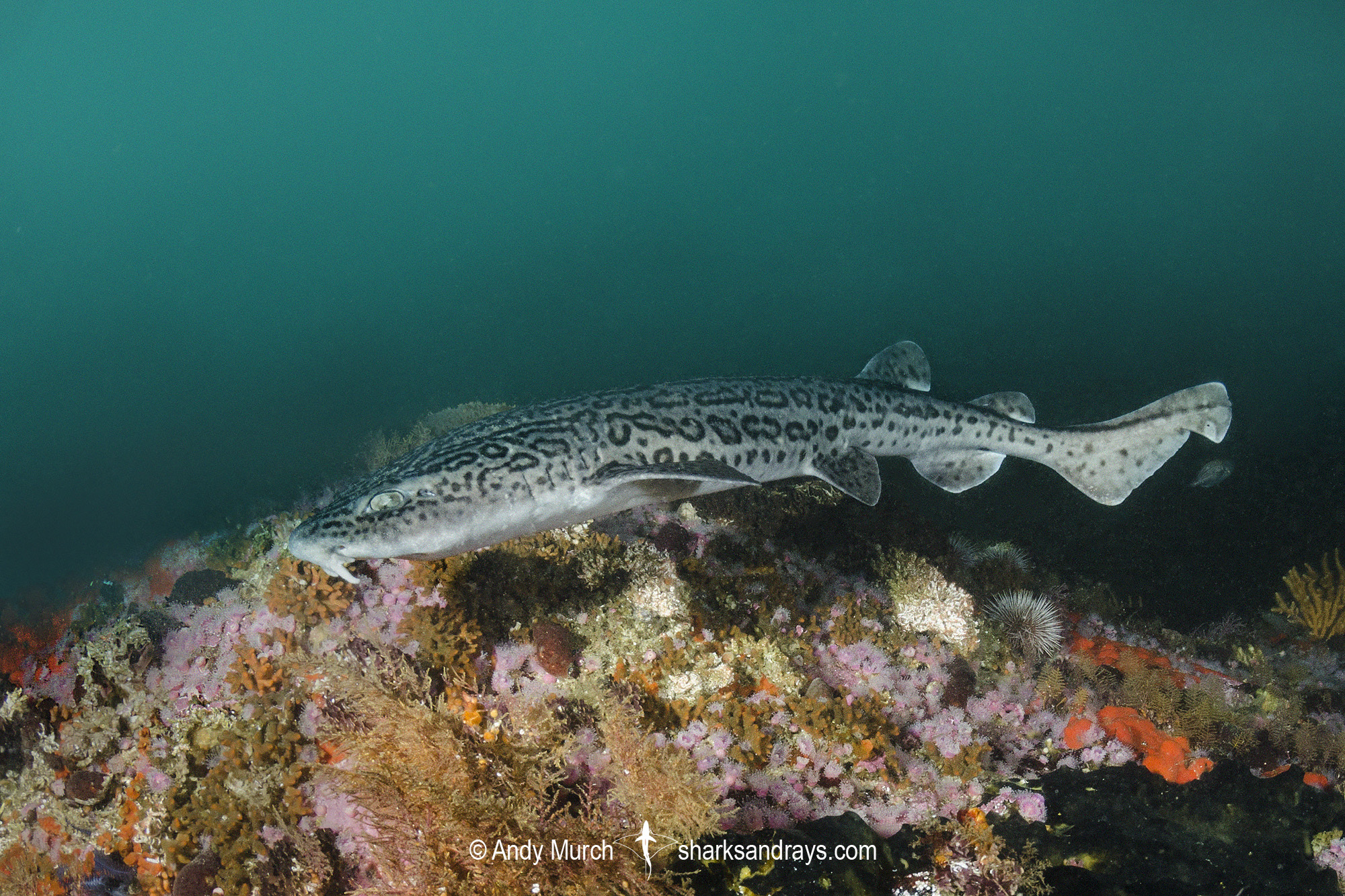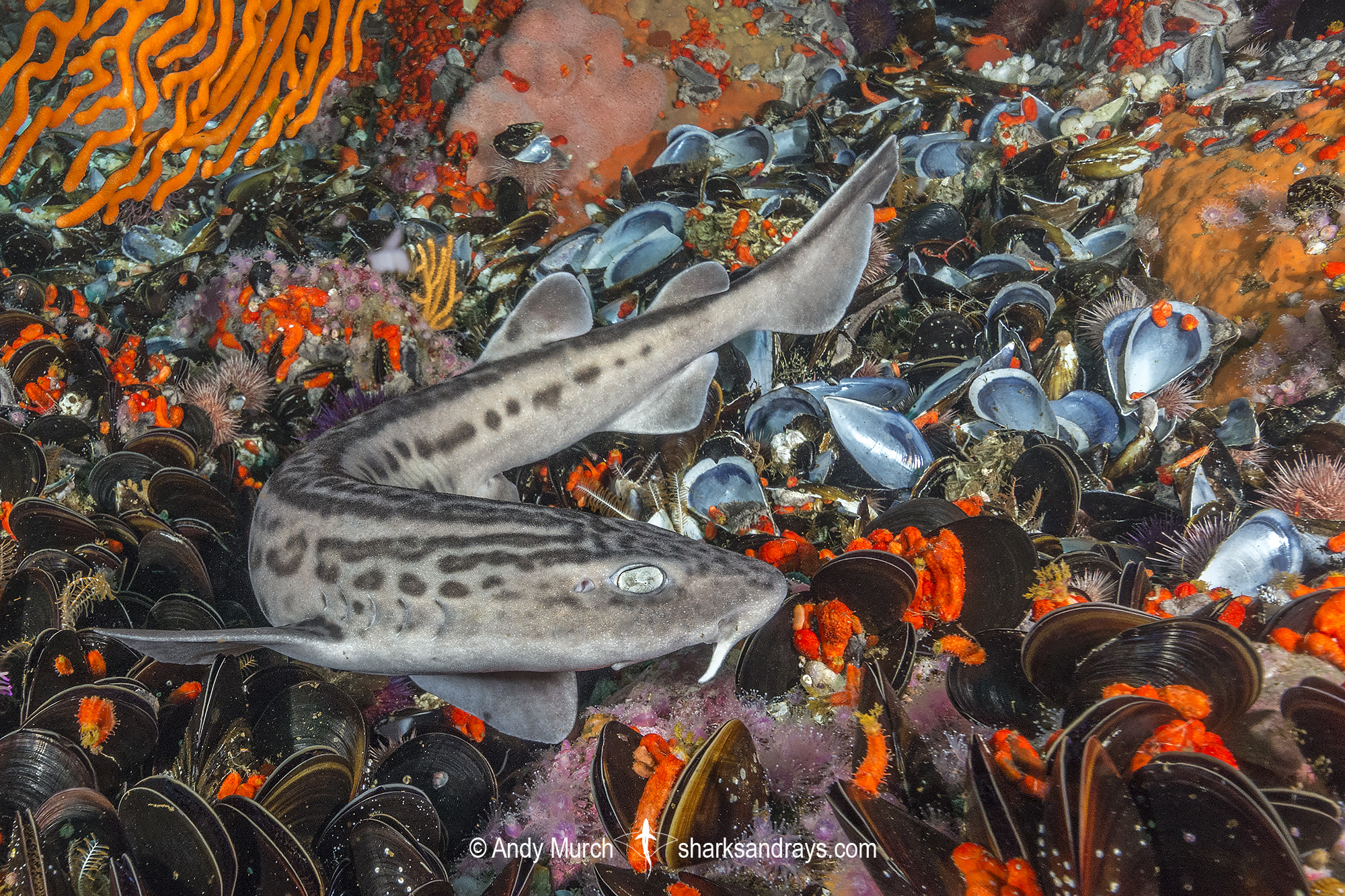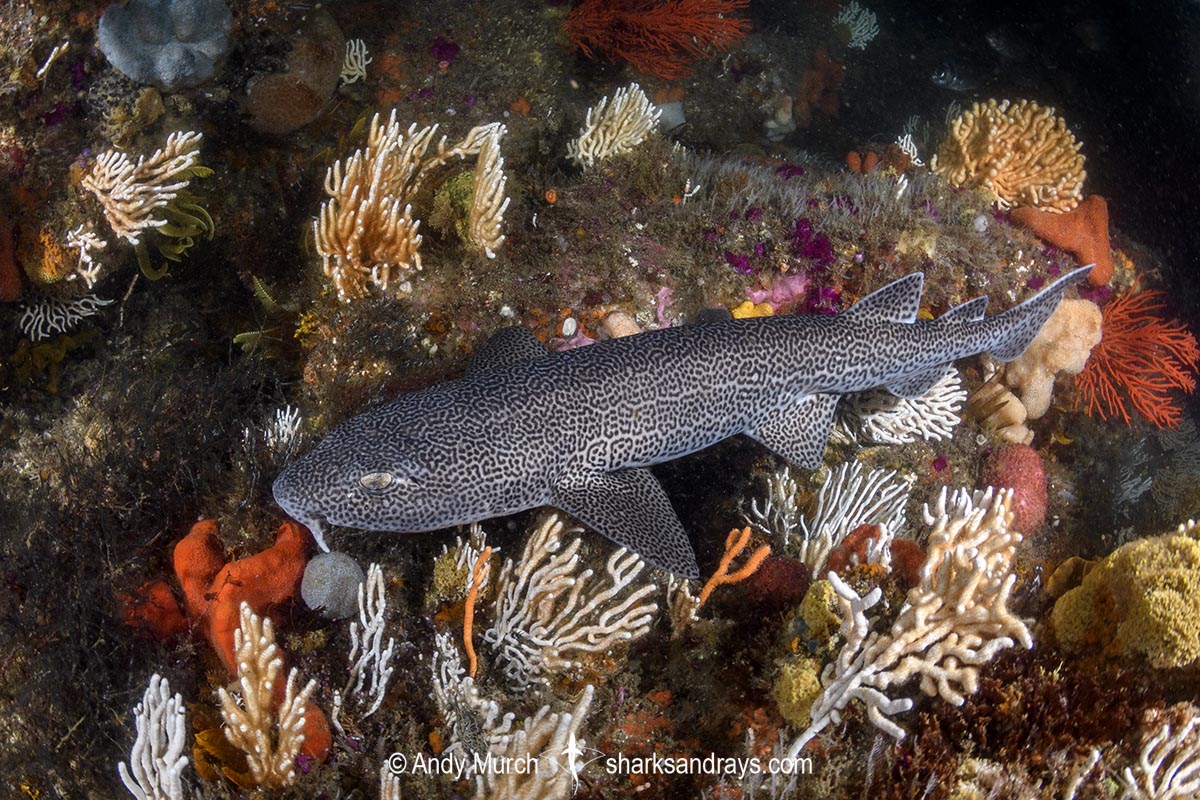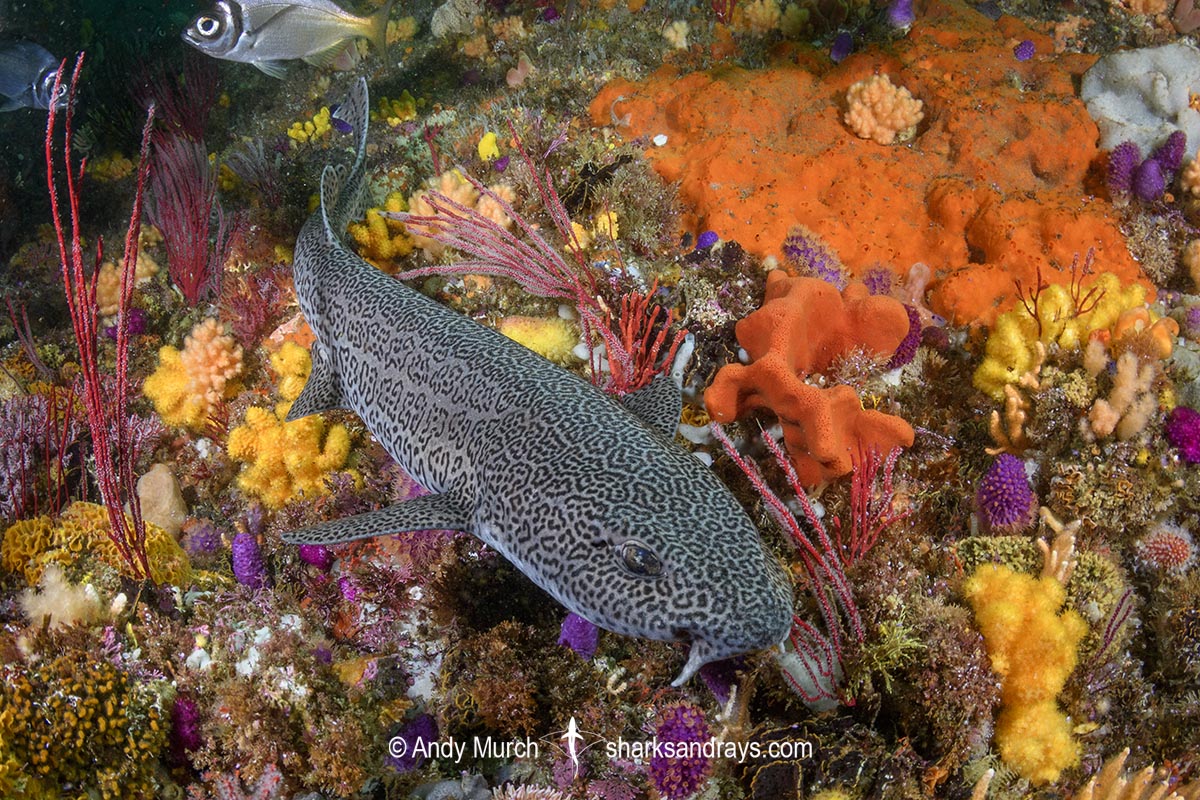Common names
Leopard Catshark.
Binomial
Poroderma pantherinum.
Synonyms
Poroderma marleyi, Poroderma pantherium, Poroderma submaculatum, Poroderma variegatum, Scyllium leopardinum, Scyllium maeandrinum, Scyllium pantherinum, Scyllium pantherinum, Scyllium variegatum.
Identification
A medium-sized catshark. Snout bluntly rounded. Mouth width greater than snout length. Long, narrow nasal flaps extend to mouth. First dorsal origin posterior to pelvic fin insertion. Second dorsal fin anterior to anal fin insertion. Anal fin much larger than second dorsal. All fins relatively long and low. Upper caudal subterminal notch well defined.
The leopard catshark has grey dorsal surface with regionally distinct patterns:
EAST LONDON: Bold leopard-like dark spots with light centres.
PORT ELIZABETH: Complex pattern of fine reticulations in a leopard-like pattern.
WESTERN CAPE: Bold, vaguely leopard-like or solid spots that often form longitudinal lines.
Size
Maximum length 77cm. Hatching size 11cm.

Conservation Status
LEAST CONCERN
The Leopard Catshark is a bycatch component of longline, gillnet, beach seine, trawl, and commercial and recreational line fisheries. Trawl fishing effort in South Africa has decreased over the past two decades. Shore line fishing has also decreased as a result of a 2002 South African ban on all-terrain vehicles on beaches. Catch data indicates that overall the leopard catshark population is stable or increasing.

Habitat
A temperate water species found on rocky reefs, kelp forests, caves, and mixed sand and rock. Intertidal to at least 274m. Usually shallower than 20m.
Distribution
The leopard catshark has a small range on the southern coast of South Africa. Found from Saldanha Bay on the Western Cape, eastwards to KwaZulu-Natal.
Reproduction
Oviparous. One egg per oviduct. Possibly reproductively active all year.
Diet
The leopard catshark consumes small bony fishes and invertebrates.
Behavior
Mostly nocturnal. Rests in crevices and caves during the day.
Reaction to divers
Fairly easy to approach when resting on the reef. Extremely bold but not aggressive in baited situations.
Diving logistics
Although not quite as common as the closely related pyjama catshark, the leopard catshark can be encountered at many rocky or kelpy dive sites from False Bay to East London. At Miller’s Point on the west end of Simonstown, divers are likely to see one or two Poroderma patherinum among the other catshark species, that are abundant there.
False Bay is one of the stops on Big Fish Expeditions’ South African Endemic Shark and Ray Expedition.






















